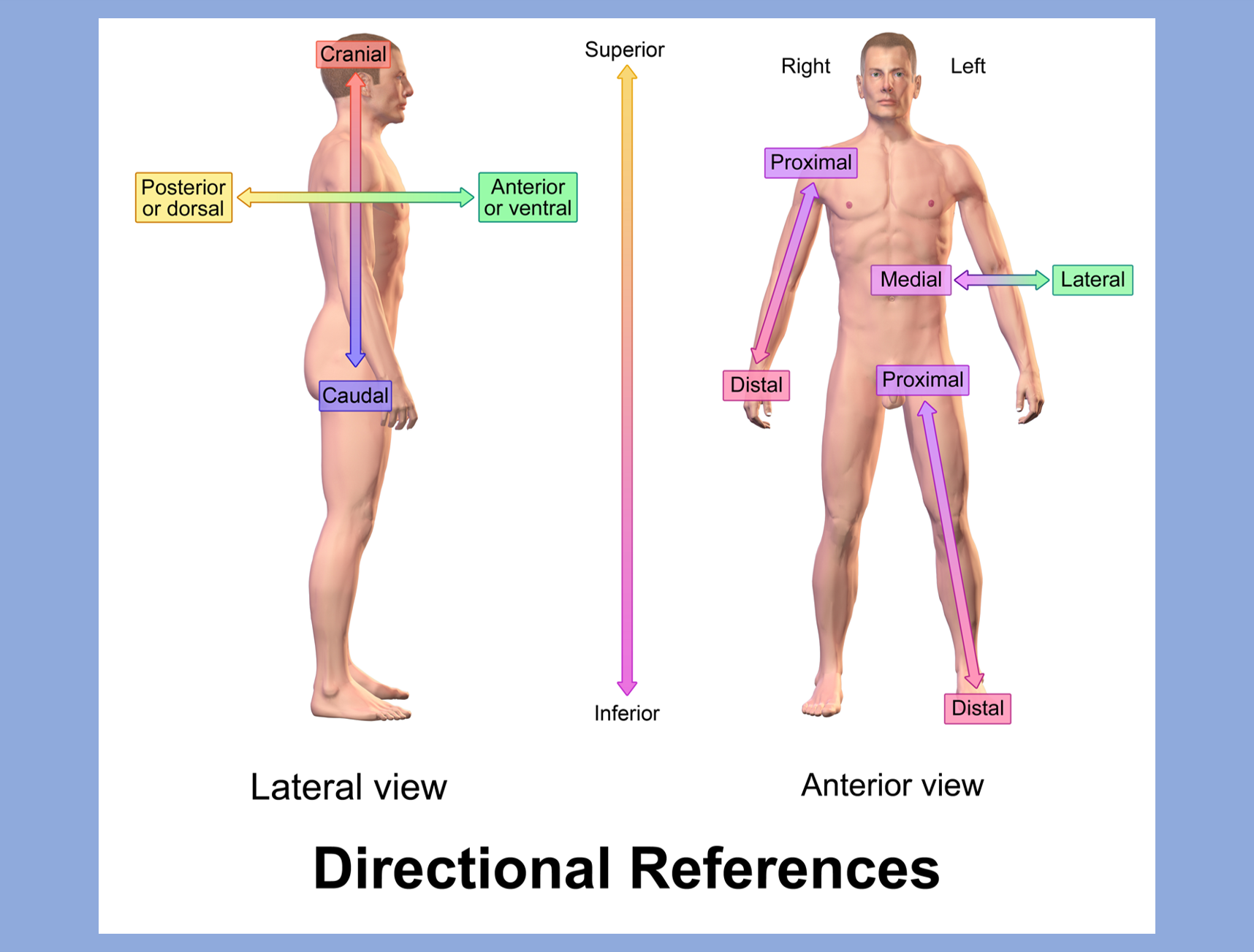Module 1: Body Structure and Homeostasis
Section outline
-

This module will introduce terms for body direction, anatomical planes, regions, and quadrants, and basic information on all body systems and their functions. Anatomists and healthcare providers use this universal terminology for precision and to reduce medical errors. Using precise anatomical terms eliminates ambiguity and creates a unifying language scientists and medical professionals use internationally. These terms and information in this unit will be used in many other units. Learning these medical terms will assist in building the foundation needed for the language used in any medical career.
Homeostasis is essential since this is the body’s way of maintaining internal and external balance. The failure of homeostatic regulation in just one body system will cause conditions to deteriorate and may be fatal. For the health of an organism, all homeostatic regulation mechanisms must function correctly.
Upon completion of this module, you will be able to:- Define the terms organ, organ system, and organism. anatomical position, directional terms, sagittal, frontal, transverse planes, midsagittal, and parasagittal. (CLO #1)
- Name the eleven organ systems of the human body, identify the major organs, and give each system a major function.(CLO #1, #2, and #3)
- Describe how the abdominopelvic region is divided into either nine regions or four quadrants. (CLO #1)
- Explain the importance of homeostasis to physiology and specify three conditions that are maintained by homeostatic processes. (CLO #1 and #3)
- Define a feedback loop. Explain what is meant by negative and positive feedback systems and describe their role in homeostasis. (CLO #1 and #3)
To achieve these objectives:
- Review the syllabus and introduce yourself in the "Introduce Yourself!" forum.
- Read the Module 1 Introduction. (MLO #1-5)(CLO # 1 and 3)
- Read Chapters 1 and 2 from the Human Anatomy & Physiology I textbook. (MLO #1-5)(CLO #1-3)
- Test Your Knowledge sections are located at the end of each segment in both chapters. Answering the questions in these sections will aid in your knowledge to help you with the course. These questions will be relevant for information on testing and quizzes. (MLO1-5)(CLO#1-3
- Complete the exercises in the "Practice" sections at the end of each chapter.( (MLO 1-5)CLO #1-3)
- Complete the discussion activity. (MLO #4)(CLO #1-4)
- Complete the case study exercise. (MLO#4)(CLO #1-4)
- Complete the quiz. (MLO # 1-5) (CLO #1 and 3)
Note the check boxes to the right that help you track your progress: some are automatic, and some are manual.
Module Pressbooks Resources and Activities
You will find the following resources and activities in this module at the Pressbooks website. Click on the links below to access or complete each item.
-
Read chapter, review the "Test Your Knowledge" questions, and complete the activities in the "Practice" section at the end of the chapter.
-
Read chapter, review the "Test Your Knowledge" questions, and complete the activities in the "Practice" section at the end of the chapter.
-
In this quiz, course learning outcomes #s 1, and 3 and module learning outcomes #s 1, and 5.
This quiz will have 5 questions. It is worth 10 points. You are allowed two attempts at this quiz. Correct answers will be available for review after the quiz is closed.
Directions for Instructors: Load questions from the Module 1 Question Bank. Set close date and then tick "Right answer" box under "After the quiz is closed" section of Review Options.
Background Colour
Font Face
Font Kerning
Font Size
Image Visibility
Letter Spacing
Line Height
Link Highlight
Text Colour
